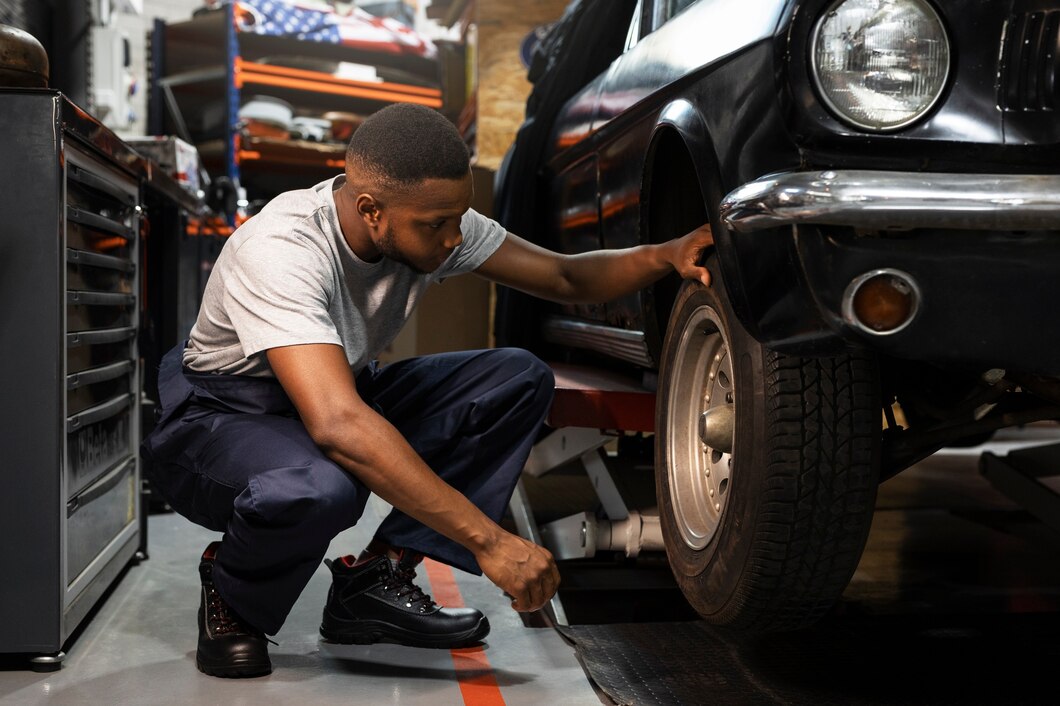Struts are a vital component of your vehicle’s suspension system, responsible for providing stability, control, and a smooth ride. Over time, struts can wear out due to normal use, road conditions, and environmental factors. Recognizing the early signs of worn-out struts can help you address the issue before it leads to safety hazards and costly repairs. Here are some indicators that your car may need new struts.
1. Excessive Bouncing
Significance:
One of the primary functions of struts is to absorb shocks and vibrations from the road surface, providing a comfortable ride. If you notice that your car bounces excessively after hitting bumps or uneven surfaces, it could indicate worn-out struts.
Action:
Test your vehicle’s suspension by pushing down on each corner of the car and observing how it reacts. If the car continues to bounce excessively or doesn’t return to its normal position quickly, it may be time to replace the struts.
2. Poor Handling and Stability
Significance:
Worn-out struts can compromise your vehicle’s handling and stability, making it feel loose or unstable, especially when cornering or navigating curves. You may notice increased body roll or sway, as well as difficulty maintaining control of the vehicle.
Action:
Pay attention to how your car handles during turns and maneuvers. If you experience excessive body lean or a lack of responsiveness in the steering, have your suspension system inspected by a professional.
3. Uneven Tire Wear
Significance:
Faulty struts can cause uneven tire wear, as they fail to keep the tires properly aligned and in contact with the road surface. You may notice excessive wear on the edges or one side of the tires, which can affect traction and overall tire performance.
Action:
Regularly inspect your tires for signs of uneven wear, including bald spots, cupping, or irregular tread patterns. If you notice any abnormalities, have your alignment and suspension checked to determine if worn-out struts are the cause.
4. Excessive Noise
Significance:
Worn-out struts can produce various noises, such as clunking, rattling, or banging sounds, particularly when driving over bumps or rough roads. These noises occur due to loose or damaged components within the strut assembly.
Action:
Listen for unusual noises coming from your suspension system while driving. If you hear any abnormal sounds, have your vehicle inspected by a mechanic to identify the source of the noise and determine if the struts need replacement.
5. Nose-Diving or Rear-End Squatting
Significance:
When braking or accelerating, worn-out struts may cause the front end of the car to dip forward (nose-dive) or the rear end to sag down (rear-end squatting). This can affect braking performance, stability, and overall vehicle dynamics.
Action:
Pay attention to how your car behaves during braking and acceleration. If you notice excessive nose-diving or rear-end squatting, it may indicate that the struts are no longer providing adequate support and need to be replaced.
6. Fluid Leaks
Significance:
Visible fluid leaks on or around the struts indicate internal seal failure, resulting in a loss of hydraulic fluid. Fluid leaks can compromise the performance and lifespan of the struts, leading to further damage if left unaddressed.
Action:
Inspect your struts for signs of oil or hydraulic fluid leaks. If you notice any fluid accumulation, have your struts inspected by a professional to determine the extent of the damage and whether replacement is necessary.
7. Excessive Vibration or Jarring
Significance:
Worn-out struts can transmit excessive vibrations and jolts from the road surface to the vehicle’s cabin, resulting in a rough or uncomfortable ride. You may feel every bump, pothole, or imperfection in the road more acutely than before.
Action:
If you experience increased vibration or jarring while driving, especially at higher speeds or on rough roads, it may indicate worn-out struts. Have your suspension system inspected to identify the source of the vibrations and determine if new struts are needed.
Your car’s struts play a crucial role in maintaining stability, control, and ride comfort. Recognizing the early signs of worn-out struts can help you address the issue promptly and ensure your vehicle remains safe and reliable on the road. If you experience any of the symptoms mentioned above, have your suspension system inspected by a qualified mechanic to determine if new struts are necessary. By staying proactive and attentive to your car’s condition, you can enjoy a smoother, safer, and more enjoyable driving experience.











